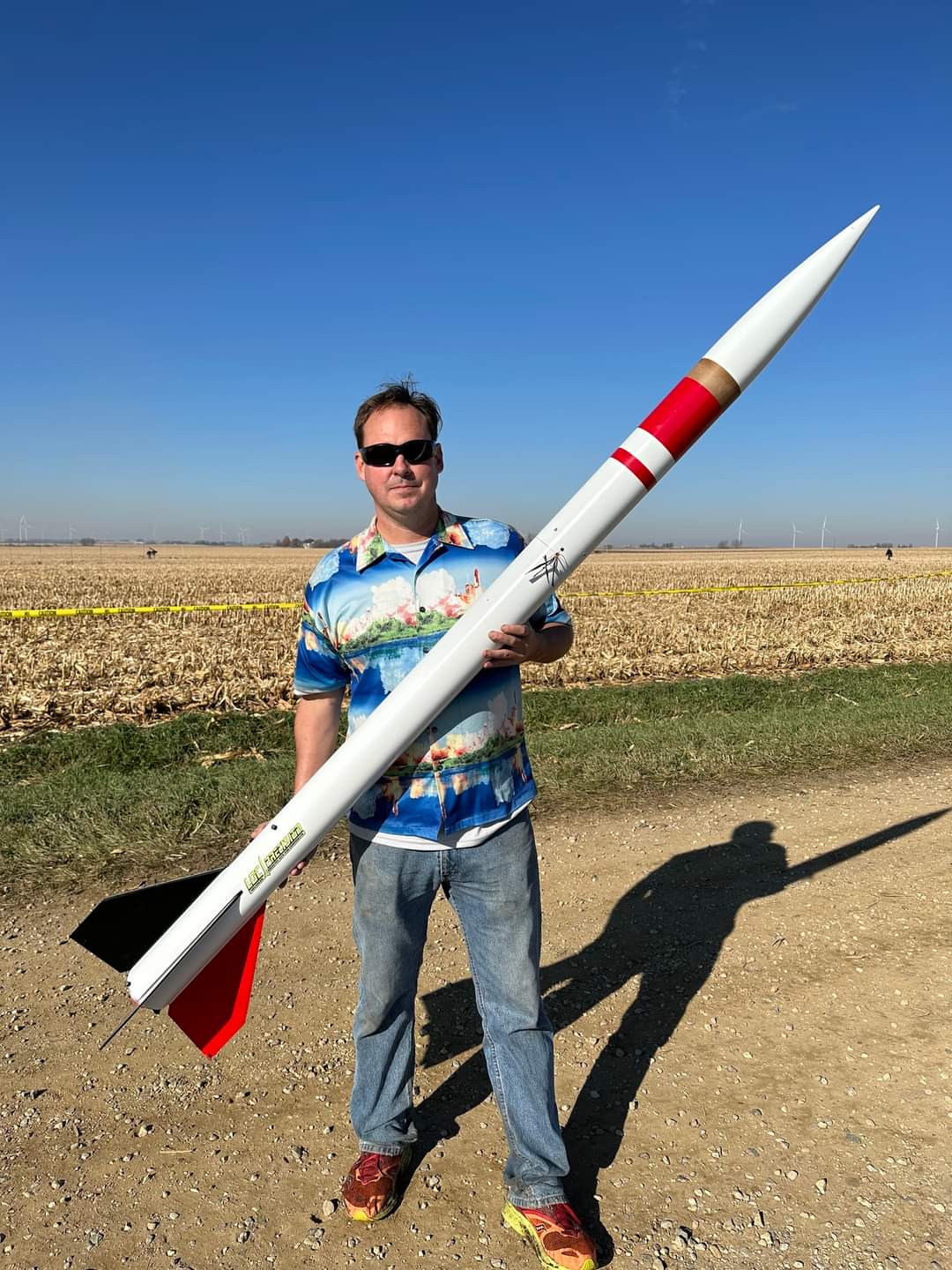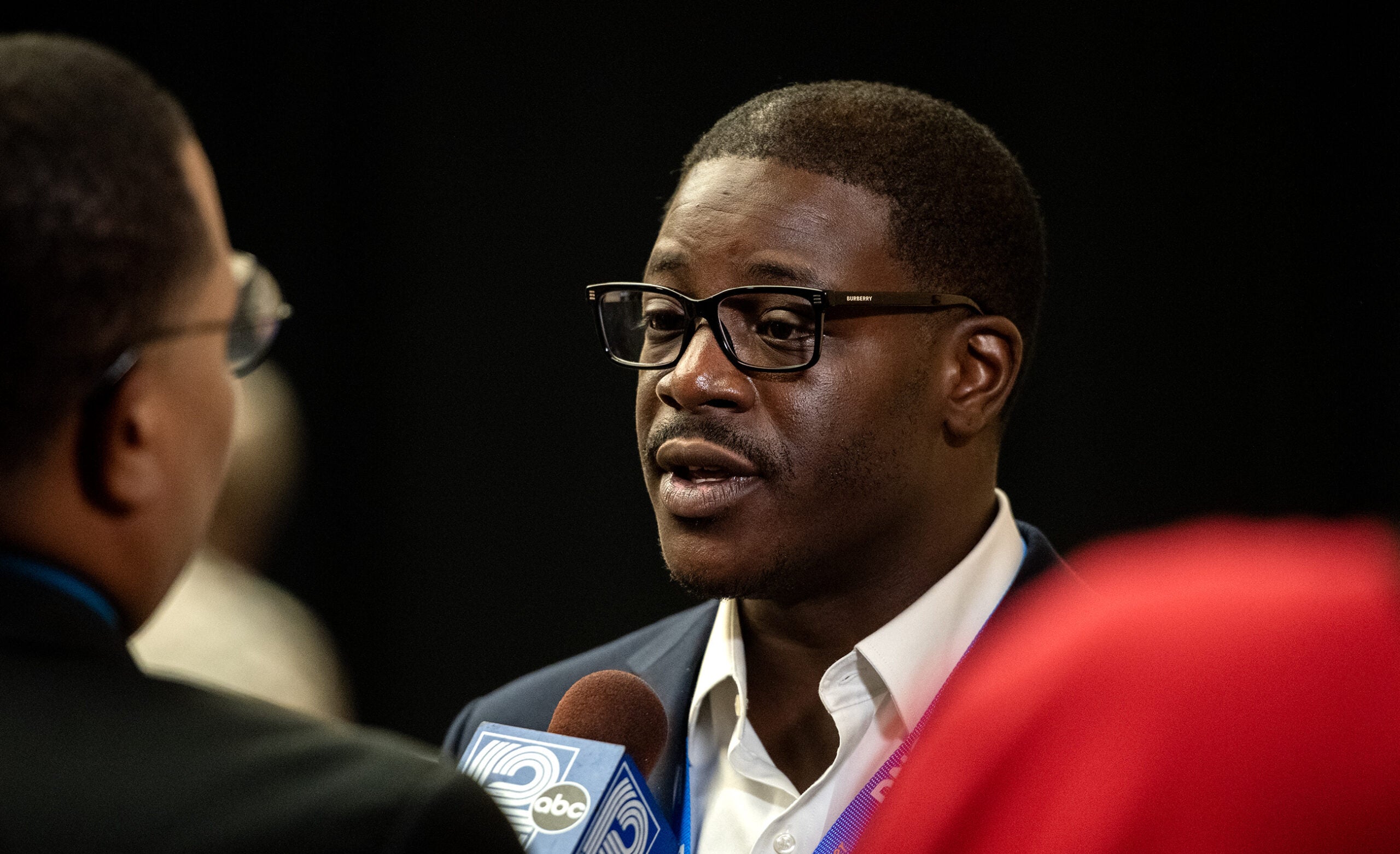Eric Cayemberg has been a fan of rocketry since he was 8 years old.
In the 35 years since then, he’s earned the highest level of national certifications in rocketry and co-founded Cool City Rockets, which launches rockets monthly in Two Rivers, Wisconsin.
And for 22 years, Eric has helped organize Rockets 4 Schools, which holds its annual competition today and tomorrow in Sheboygan. Middle and high school students from all over the U.S., but primarily the Midwest, build high power rockets and launch them during the event.
News with a little more humanity
WPR’s “Wisconsin Today” newsletter keeps you connected to the state you love without feeling overwhelmed. No paywall. No agenda. No corporate filter.
Cayemberg talked with WPR’s Larry Meiller about his fascination with small and large rockets and how to get into the hobby.
“A lot of people get into it for the smoke and the fire,” he said on a recent appearance on “The Larry Meiller Show.” “My dad did it as a kid, and so he introduced me to rocketry at a young age. And now I have kids. We have three active generations of Cayembergs flying rockets around here.”

The following has been edited for clarity and brevity.
Larry Meiller: You were probably, I’m guessing, around 19 or so when the movie “October Sky” came out.
EC: Yes, Homer Hickam and Coalwood, West Virginia. So I think that was a wonderful book — the book preceded the movie.
But definitely an inspiration and as I look back and I reflect — I’ve read many of Homer’s books — there’s a lot of parallels between his upbringing and mine, except I think he was trying to escape Coalwood, West Virginia, in order to get into the rocketry industry. And I’ve got some pretty deep roots in Wisconsin, so I haven’t tried quite as hard to escape.
LM: You launch both model rockets and larger high powered rockets. What’s the basic differences between those?
EC: Regulations and size. So model rocketry is still a fairly common thing I’d say with schools and 4-H and other learning organizations, and even kids big and old, young and small.
So model rocketry — A through D rocket engines — and then high power, that’s when you run into bigger rockets, bigger motors, a lot more regulations.
So there’s two national organizations that govern model rocketry. There’s Tripoli Rocketry Organization, which focuses more on the high power end of things. And then there’s National Association of Rocketry, and they focus more on the model, but definitely include high power as well.
So long story short, any time that rocket gets to be weighing 3.3 pounds or more or containing 125 grams of propellant or more, it’s a high power rocket by definition, and it requires certification through one of those two governing bodies.
And there’s a few other things, too. The biggest thing there is that when it enters that high power realm, then we need an FAA waiver in order to fly into airspace.
So, there are a few more rules just to make sure that we keep things safe, which is, of course, always the No. 1 priority, especially with rocketry.
LM: What are the largest and highest flying rockets that you yourself have launched?
EC: There have been people that have flown bigger rockets and higher and faster, but me personally, the largest motor I’ve ever flown is an O.
So, when we talk about rocket motors, they double each successive letter. So a B motor would be twice the power of an A motor and so on. So as you go through the alphabet, by the time you’re getting up to an O motor, it’s 5 or 6 inches in diameter and 5 or 6 feet long — a lot of power.
I’ve flown an O motor, and that particular flight — there have been a few — but I had one that went pretty fast. It was an O25,000, which doesn’t mean too much to anybody, but … it went from sitting still to Mach 2.3 in 1.48 seconds.
It pulled 64 Gs on the way. So you think about if you’re ever flying an aircraft, if you’re doing aerobatics, the human body before you start to black out, is 6 to 8 Gs, maybe 10 Gs, if you’re really conditioned for it. This was 64 Gs and I had some electronics on board that it actually literally flattened them from the acceleration of launch.
That one went about 23,000 feet. I have gone higher. My personal best is just under 45,000 feet.
LM: And one of the things I noticed was, on the reuse, retrieving. And you do retrieve your rock under any circumstances.
EC: Yeah. That’s that’s the beautiful thing about rocketry. It’s not like a firework where it shoots up and goes boom, right? Sometimes there’s a misconception that rocketry is single use.
I know several people that have rockets that have flown one single airframe over 100 times. I haven’t quite hit that milestone with any of my rockets. I’ve got a couple that are over 50 flights now.
Then you mentioned Cool City Rockets and Two Rivers. I have one rocket that I fly every single month when we get together. And that one has a little over 40 flights now.
So, yeah, they launch up, they deploy a parachute, if all goes well, they come back safely to ground. You reload them and do it again.





